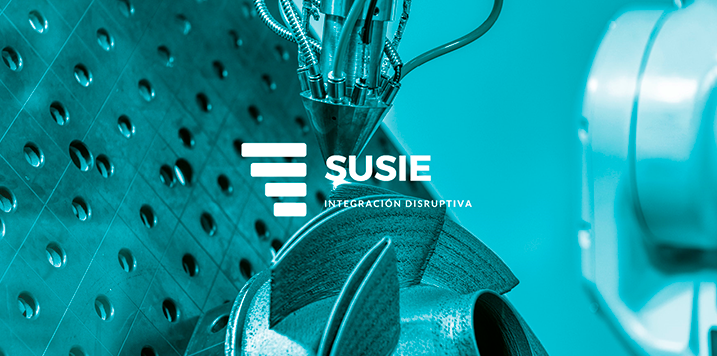 17 June, 2021
17 June, 2021The SUSIE project consortium has managed to integrate 4-wire cabling onto the surface of steel tools: “A fundamental step that allows sensors to capture data from hard-to-reach zones of dies and manufacturing tools”.
In materials transformation processes, many relevant events take place in hard-to-reach locations in which, due to the working conditions, data cannot be captured directly. As a result, these processes are monitored using data obtained indirectly; the same happens with models and simulations based on these parameters.
In the face of this lack, the SUSIE project consortium, led by the AZTERLAN Metal-working Research Centre, has achieved an important advance that will enable direct sensing in these critical areas; “we have managed to integrate cabling onto the surface of steel tools using additive technology”.
As the project team explains, “ensuring the power supply and extraction of the signal is a fundamental first step in implementing a system of surface sensors in machining tools”. With the “sub-cutaneous” insertion of the cabling to supply power to the sensor and to collect the data it produces, the research team has successfully completed the first of its planned objectives.
The first successful attempt to implant 4-wire cabling
The integrated cabling system consists of 4 wires with mineral insulation. “As far as we know, this is the first successful attempt using this method”, and they add “there have been previous attempts to embed thermocouples and cables, however, we do not know of any previous attempts using 4-wire cables under our developmental conditions”.
To achieve this, the SUSIE consortium used LMD (Laser Metal Deposition) technology, “which has enabled us to use controlled welding, with a low thermal contribution that does not harm the substrate (the tool metal) or the cabling”. In fact, identifying the working limits that allow a successful weld without damaging these elements is an extremely valuable discovery.
Surface cable welding using LMD
The attached vídeo shows the process of embedding 4-wire cabling onto the surface of a steel tool using additive technology for laser metal deposition:
Presentation in MESIC 2021
The results of this research was presented in MESIC 2021 (Manufacturing Engineering Society International Conference), which took place on the 23rd, 24th and 25th of June 2021 as a virtual event. The research work, whose authors are María Ostolaza, Jon Iñaki Arrizubieta, Maider Muro, José Exequiel Ruiz, Garikoitz Artola and Aitzol Lamikiz, was awarded the prize for the best paper granted by the Journal of Manufacturing and Materials Processing (MDPI editorial).
The SUSIE project forms part of the strategic projects supported by the Basque Government’s ELKARTEK 2020 program (file number KK-2020/00063), with a total budget of 612,000€. It is headed by the AZTERLAN Metal-working Research Centre, with the participation of the TEKNIKER and TECNALIA technology centres and with the close collaboration of the MU and UPV/EHU universities, that work on the technical development of the project, while INVEMA, the AFM’s technology unit and supply and demand intermediary agent of the Basque Network for Science and Technology, will attend to diffusion and communications within the industrial environment.
Subscribe to our newsletter. Just insert your e-mail and you will receive the latest news.